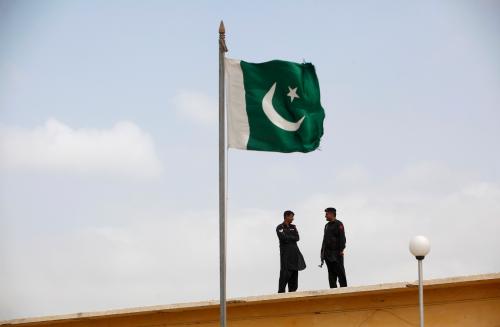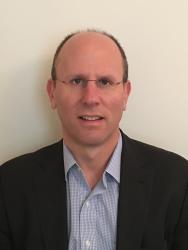Experts on violent extremism have long emphasized the need to focus on preventing terrorist activity—addressing its root causes—rather than only reacting to it. Indeed, a new report from a Congressionally-mandated bipartisan task force at the United States Institute of Peace (USIP) calls for a new strategy on preventing violent extremism in fragile states along those same lines. Such recommendations should be welcomed by security and development experts in the current hyper-partisan political climate in Washington, where President Trump has so far shown little interest in moving beyond a reactive approach to countering terrorism that places undue emphasis on military solutions to the problem.
The task force recommends a more coordinated and sustained approach to preventing the drivers of extremist violence in the Sahel and Middle East and North Africa (MENA); new and expanded partnerships with government and non-governmental actors in fragile states; more emphasis on local governance, inclusion, and trust-building; more agile programming that responds to the needs of local communities rather than donor capital interests; better alignment between U.S. security and prevention priorities; and breaking down the long-standing silos within the U.S. government’s diplomacy, development, and security bureaucracies to enable the United States to engage more systematically and strategically on prevention on the global stage, including within international institutions such as the World Bank and United Nations, let alone in fragile states, should be acted upon.
However, many of the objectives could be advanced even without the proposed new frameworks, initiatives, and funding mechanism, given all of the ongoing multilateral prevention efforts that need to be better leveraged, resourced, and coordinated. Although the report says the multilateral landscape falls outside of its scope of the report, understanding and strengthening this architecture is actually critical to advancing the prevention agenda globally.
What we already have
A number of relevant ongoing efforts merit attention, all of which are continuing in the face of diminished U.S. political and financial support for multilateralism more broadly since President Trump took office. The Organization for Economic and Development Cooperation (OECD), the World Bank, and the Global Community, Engagement, and Resilience Fund (GCERF) are three of the most relevant ones.
OECD: Fully leverage its convening, coordinating, and program evaluation tools
As a result of the 2016 update to the OECD’s Official Development Assistance guidelines, the 35 OECD member states can now report funding for activities to prevent violent extremism as part of their annual development target. Although it is difficult to quantify the precise amounts, this change, which the United States helped champion, has allowed for additional development resources to be used to address the structural and other drivers of extremism—and thus prevention.
Yet the OECD, particularly with a strong political push from arguably its most influential member, the United States, could be doing more to influence the direction and quality of donor expenditures in this field—issues that the USIP report addresses. This includes leveraging the OECD Development Assistance Committee’s program evaluation, peer review, and networking tools for purposes of improving the quality and effectiveness of aid that prevents the underlying causes of extremism and serving as a platform for convening discussion on the use of development aid for this purpose so that efforts to prevent extremism violence are more closely monitored and understood from a development perspective.
Echoing many of the themes in the USIP report, the OECD’s International Network on Conflict and Fragility (INCAF)—where the United States is one of 37 members—has recently underscored the need for “local, national, regional and international actors to prioritize attention and efforts (including both financial and political resources) on prevention;” committed itself “to contributing to prevention through the use of diplomatic, programmatic and financing approaches that include the meaningful participation of women, youth and underrepresented groups;” and stressed the importance of overcoming many of the same barriers to cooperation addressed in the task force report, while highlighting the need for tailored, local solutions based on “joint analysis…and broad and enhanced cooperation with other actors.”
In fact, INCAF could serve as the international platform for donors, civil society, and the private sector to discuss ways to pool their resources and coordinate their activities in support of prevention, similar to what the USIP task force calls for.
The World Bank: Seize on untapped potential for addressing the structural drivers of extremism
Consistent with the recent trends in international development institutions, the World Bank is slowly shedding its historic reluctance to involve itself in political domains and is now responding to demands for help in addressing violent extremism from governments in fragile and conflicts afflicted areas, including MENA and the Sahel, particularly Mali, Niger, Nigeria, and Tunisia. This is part of a larger, albeit still gradual, shift in the bank to prioritize the prevention of violent conflict (to include violent extremism). Practically, the significance of this shift from the perspective of the PVE (preventing violent extremism) community, will include more development funds and other development resources being directed to those communities most susceptible to radicalization and recruitment to violence (rather than the poorest) and more focus on addressing the structural drivers of violent extremism (vice poverty) with and within them.
There are a growing numbers of examples of this progress. For example, preventing extremist violence featured prominently on the agenda of the 2018 World Bank Fragility Forum, the bank’s Fragility Conflict and Violence (FCV) Unit organized the bank’s first-ever internal PVE workshop inviting representatives from its country offices and practice groups for a frank conversation about the institution’s work in violent extremism-affected or -threatened spaces to enhance its engagement with the PVE agenda, and PVE will be integrated into the World Bank’s new FCV strategy.
The bank’s comparative advantages here are significant. They range from:
- Data collection and analysis to help countries understand the drivers of extremist violence and the community dynamics that support or build resilience against it;
- Its position as a center of knowledge-sharing on violence and conflict, and provider of technical assistance, particularly to key non-law enforcement agencies; its reputation as an “honest broker” to facilitate policy dialogues with governments on the drivers of violent extremism and to encourage governments to tackle structural challenges such as political exclusion, regional imbalances with a country, or youth integration; and
- The unique entry points it can offer for high-level engagements on prevention, including with ministries of finance, transportation, health, and education.
Yet these advantages have yet to be leveraged fully. This is partly due to a lack of clear political direction from the World Bank’s Governing Board, something that constructive and strategic U.S. engagement could help change, and concerns how an increased focus on prevention might undermine traditional development work carried out within the bank’s global practice groups.
GCERF: Improve but don’t reinvent the wheel
GCERF, which is mentioned briefly in one of the report’s appendices, is a multilateral fund that was set up in 2014 (with the United States and Switzerland leading the diplomatic charge) to mobilize and pool resources from donors to support local, community-level initiatives aimed to strengthen resilience against violent extremist agendas. It works in partnership and consultation with governments, civil society, and the private sector in fragile and conflict affected states—including Bangladesh, Kosovo, Kenya, Mali, Nigeria, and Tunisia—to address the local drivers of violent extremism. (The USIP report incorrectly notes that GCERF is focused on the “manifestations” of violent extremism. It is not.)
The Geneva-based GCERF was launched when the PVE playing field was sparsely populated—predating the release of the U.N. Secretary-General’s PVE Plan of Action—and thus had little competition from other entities that could deliver small-grants to local civil society groups to prevent violent extremism. In the intervening years, however, particularly following the growth of the Islamic State and the foreign terrorist fighter phenomena, the PVE space has become more crowded, including with a plethora of PVE small-granting mechanisms, and GCERF has struggled to attract the level of funding expect when it was created.
Nevertheless, it has many of the structural and other attributes, including an inclusive, multi-stakeholder governing board and a “rigorous culture of design, monitoring, and evaluations” that the proposed “Partnership Development Fund” called for by the USIP task force would have. As such, rather than initiating a diplomatic effort to launch a new fund—an effort that is likely to be met with skepticism, both in Congress and among bilateral and multilateral partners, given the already crowded multilateral landscape, replete with under-funded initiatives—the United States should first look to repurpose the GCERF for “coordinat[ing] donor activities and pool[ing] donor funds in support of a shared approach to prevention.”
Conclusion
Let’s hope the task force report catalyzes a bi-partisan discussion in Congress on the need for a long-overdue comprehensive U.S. strategy for preventing extremist violence in fragile states that moves beyond the often reactive and fragmented U.S. efforts over almost two decades. However, a core part of any discussion and resulting strategy needs to feature the increasingly important role that multilateral institutions are playing in prevention, a role that renewed U.S. engagement with and leadership in these fora would only strengthen, thus reducing the burden on the United States and American taxpayers.






Commentary
To prevent extremism, don’t forget the existing multilateral architecture
March 4, 2019